General Information of Khorasan Razavi Province:
According to the findings and beliefs of archaeologists, Khorasan has a history of 800,000 years and is considered one of the oldest centers of civilization. The word “Khorasan” is a combination of the two words “Khor” meaning “sun” and “Asan” meaning rising and has been called by this name since the Sassanids.
Today’s Khorasan is the only corner of vast Khorasan that includes the distant past, Merv, Herat, Samarkand, Bukhara, Sistan and Baluchestan. It has also been important for the transfer of knowledge and culture.
Khorasan Razavi in the northeast of the country with an area of 1166348 square kilometers after Kerman, Sistan and Baluchestan and Yazd provinces is the fourth largest province of Iran, which includes 7% of the country’s territory. The province shares the largest border with Turkmenistan (531.6 km), followed by Afghanistan (302 km) and a total of 833 km.
Khorasan Razavi province with an approximate population of 6.3 million people (8% of the country’s population) has a relative density of 54.5 people per square kilometer. Of these, 68.2% are urban and 32.8% are rural. Also, 50.25% of the province’s population are men and 49.75% are women.
According to the latest national divisions of Khorasan Razavi province with the center of Mashhad, it includes 25 cities, 67 districts, 71 cities, 160 villages.
Khorasan Razavi Province Infrastructure:
1- Sample tourist areas:
Khorasan Razavi province has 3 international sample tourism areas (Shandiz-Neishabour-Toos), 2 national tourism sample areas (National sample area of Sepad Khorasan – National sample area of Kalat Orthodoxy) and 26 sample provincial areas.
2- Mashhad International Exhibition:
Mashhad International Exhibition Company, in an area of 600,000 square meters, annually hosts more than 1.5 million visitors to its specialized and international exhibitions.
3- Sarakhs Special Economic Zone:
One of the great projects of Khorasan Razavi province in the field of foreign trade, transit and investment is the special economic zone of Sarakhs. This area has been constructed in 8 km southwest of Sarakhs city and in Astan Quds Razavi lands with an area of 5200 hectares. He mentioned districts, warehousing, transportation, cold storage, welfare and tourism services, and so on.
4- Dogharun Special Zone:
Dugharun Special Zone, located at the Dugharun border crossing, which is the oldest and most active border between the Islamic Republic of Iran and the Islamic Republic of Afghanistan, is an exceptional and unique location for industrial-industrial-commercial-commercial investment and support services, especially warehousing and facilities. It provides international production and trade in a unified and accessible manner for Iranian and foreign investors, especially citizens of Iran’s neighboring countries.
5- Khorasan Razavi Industrial Towns:
Among the most important goals of establishing industrial estates, improving the position of small and value added industries and industrial employment in the country, modernization of small industries in order to make them competitive, growth and development, as well as creating and developing industrial complexes and companies, providing necessary facilities and services. Applicants are investing in different areas and Khorasan Razavi province has been able to build 43 industrial towns.
6- Science and Technology Park:
Khorasan Razavi Science and Technology Park has been established to support the implementation of technological development processes in the economic and social structure of the province. To achieve these goals, specialized laboratories of electricity, electronics, chemistry, materials, metallurgy and food and industrial industries, pilot production In the field of ceramics, it has established and activated chemical, food and mechanical industries.
7. Transportation:
The province is located on the Silk Road and has long been a bridge between East and West and a gateway for spices between the North and the South, in Central Asia and the Indian Ocean, and connects Central Asia and the Persian Gulf. Due to the fact that the neighboring countries of the province do not have access to open waters, an exceptional opportunity has been provided for the development of transportation and transit of Khorasan Razavi. With these interpretations, Khorasan Razavi can be considered as the center of exchange between the continents of Central Asia and the importance of transportation in this province can be realized.
In addition to road and air transportation, Khorasan Razavi also has rail transportation in the field of cargo and passengers, and Mashhad train station is one of the largest and most beautiful stations in Iran and the Middle East, with dozens of passenger and freight trains daily. They enter or leave it. The total number of Iranian railway lines (including sub-lines) is 11,180 km, of which Khorasan Razavi, as a strategic point, is the link between Iran and Turkmenistan, Afghanistan and Turkey.
8- Customs:
The special geographical location and being on the Silk Road has led to the expansion of the province’s foreign trade and the strengthening of customs. In Khorasan Razavi province, 4 customs offices are operating, including: Bajgiran, Sarakhs, Lotfabad and Dogharun, which are among the important entry and exit points of the country.
Potentials and capabilities of Khorasan Razavi Industry Sector:
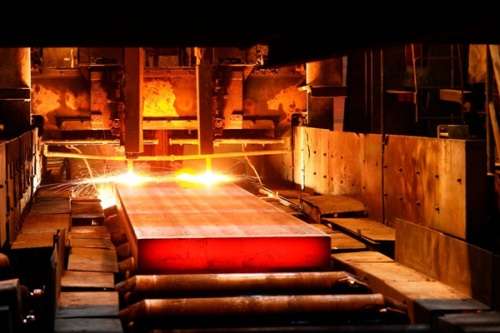
Khorasan Razavi province is one of the six poles of the country’s industry. With the development measures of recent years, while maintaining the province’s position in the food and textile industries, which are traditional fields of the province’s industry, with the completion and full utilization of the province’s steel, automotive and cement units, while contributing significantly to the province’s industrial structure, Khorasan Razavi’s share in value The country’s industrial sector will increase significantly.
The most important industrial activities of Khorasan Razavi based on the amount and share of each activity in the value added of the province’s industry are:
1. Food and beverage industries
2. Motor vehicles, trailers and semi-trailers
3. Non-metallic mineral products
4. Textiles
5. Basic metals
In total, these 5 major industrial activities create nearly 65% of the added value of the province’s industrial sector.
1- Food and beverage industries:
Khorasan Razavi province is one of the leading provinces in the food industry and the export of food industries is always one of the main export figures of the province. At present, the active food industry units of Khorasan Razavi have a special place in the following fields:
1. Production of fruit fences
2. Water production
3. Production of tomato paste
4. Production of vegetable oil
5. Cleaning and spraying
6. Cotton treatment and packaging
7. Production of sugar and sugar
Khorasan Razavi cold storages, with a capacity of 120,000 tons, have the highest refrigeration capacity among the country’s provinces.
2- Motor vehicles, trailers and semi-trailers:
Due to the activity of two car manufacturing complexes and various parts manufacturers, Khorasan Razavi province is the second hub for passenger car production in the country. Khorasan-e-Razavi automakers include Iran Khodro Khorasan and Sanabad Khodro Tous, which produce about 10 percent of the country’s cars.
The manufacturers of the province are able to produce a wide range of parts.
The construction of a variety of motorcycles, bicycles and wheelchairs is another area of the industry.
3- Non-metallic mineral products:
These industries are mainly focused on the processing of mineral products, cement industries and the production of tiles, ceramics and porcelain. Some of the most important industries in Khorasan Razavi in this field, which have a special position and include the major industrial investment of the province in this field, are:
1. Cement production industries
2. Glass and porcelain dishes
3. Types of tiles and ceramics
4. Concrete parts
5. Types of refractory soils
6. Building stones
4- Textiles:
Textile industries are known as one of the traditional and old traditional industries of the province, which is based on wool, fur, handmade carpets, leather and clothing. In recent years, with the presence of new industries such as synthetic fibers, machine-made carpets, it has also benefited from modern technology and production knowledge.
5- Basic metals manufacturing industries:
The fourth largest industry in the province is the industry active in the manufacture of basic metals. This part of the industry has a special place and importance in comparison with other industrial sectors of the province, because these industries are in fact a kind of center for the transformation and development of other industrial sectors. The role of production in this sector is very important in the development of mining industry, construction and production of industrial machinery, and in a way, it shows the ability of technology and domestic construction.
Khorasan Steel is the largest investment in the province in this sector and with the establishment of new projects such as the development process in the Khorasan Steel Development Project, pellet production in Sangan and Sabzevar Steel, its growing trend will continue in the future. After iron and steel, the production of various types of metal structures and forging products and pressing and casting are the main main investment groups in this sector.
Khorasan Razavi Mining Department:
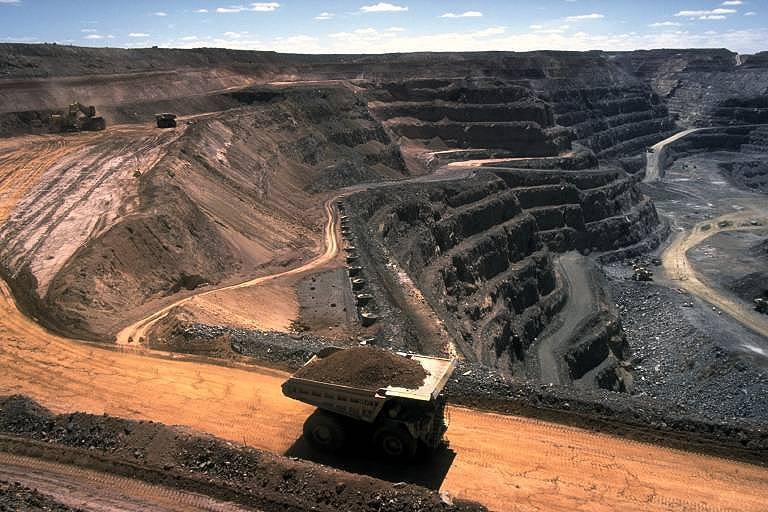
Khorasan Razavi Livestock:
Livestock statistics and livestock production:
In 1390, there were 7287703 livestock in Khorasan Razavi province, which:
6882410 head of light livestock (sheep and goats) (94.43%) of the total livestock of the province
339164 heads of heavy livestock (cattle and calves) (4.65%) of the total livestock of the province
66129 (person-head) other livestock (camels, horses and other monkeys) (90.90%) of the total livestock of the province
The number of livestock units in the province in 1390 was equal to 13780073 units, which shows a decrease of 2.7% compared to the previous year.
In 2011, the province’s red meat production was 67,872 tons, which is 3.3% more than the previous year.
The province’s milk production was 770776 tons, which is 1.81 percent more than the previous year.
Poultry statistics and products:
The total number of birds in the province in 2011 is 10508,1707, which includes:
17761020 pieces of meat chicken (16.90%)
785,000,000 pieces of broiler (74.70%)
7291700 laying hens (6.93%)
Number of 1528987 native poultry pieces (1.5%)
The production of chicken meat amounted to 11,6253 tons, which is an increase of 1.29 percent compared to the previous year.
Egg production was 82080 tons, which is 3.84 percent more than last year.
Statistics of bee colonies and honey production:
In 1390, the bee colonies of the province were 120179 colonies and produced 652.228 tons of honey.
Fisheries and aquaculture statistics:
In 2011, 673 aquaculture production centers in Khorasan Razavi province were active, of which 200 centers were engaged in the production of cold-water fish and 473 centers were engaged in the production of warm-water fish.
In 1390, 10484002 pieces of fish were released in these centers.
The number of fish released in cold water centers is 9515402 pieces (90.76%) and in hot water centers is 968600 pieces (9.23%). In 1390, the province’s aquaculture production was 4077 tons, which has increased by 17.24% compared to the previous year.
Of this production, 2,831 tons were related to cold-water fish and 1241 tons were related to warm-water fish.
The cities of Chenaran, Sabzevar and Quchan, with 565 tons (13.87%), respectively, had the highest production of aquatic fish in the province with 431.5 tons (10.29%) and 42.17 tons (10.48%).
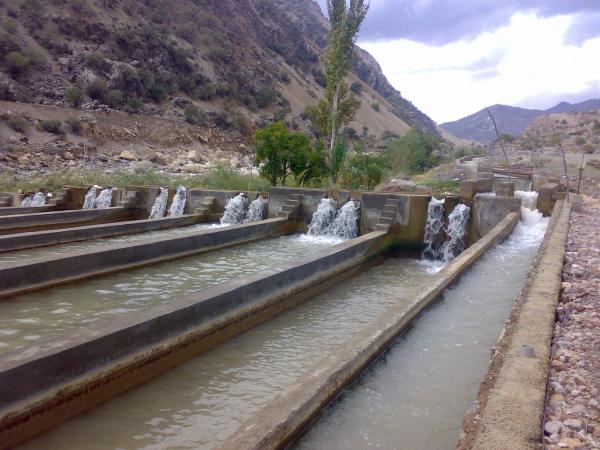
Culture and Tourism:
Khorasan Razavi province, with its religious, historical and natural attractions, is one of the most important tourist centers in the country, and every year more than 20 million domestic travelers and about one million foreign travelers visit this province.
This province is the most important religious tourism hub in the country and the tomb of the eighth Imam of Shiites has the most architectural landscape in this province. The people of this province speak Persian, Kurdish and Turkish. The religion of the people is mainly Shiite and in some border cities such as Taybad, Khaf and Torbat Jam are Sunni.
Health tourism (therapeutic tourism):
Khorasan Razavi province in the field of medical tourism and the provision of health fields due to high capabilities such as the existence of three universities of medical sciences and having strong medical-specialized staff in various fields such as heart, beauty, dentistry, orthopedics, etc. and also the existence of hospitals Equipped has a special place.

The annual arrival of one million foreign tourists to Mashhad from all over the Islamic world, proximity to Afghanistan and Turkmenistan, and low medical costs in Iran are good economic justifications for the development of medical tourism in Khorasan Razavi province.
** Developing scientific laws in the field of health tourism, monitoring the price and quality of medical services, facilitating the issuance of visas, international information, developing the transport fleet and creating welfare and accommodation centers in accordance with international standards are among the necessities of health tourism. In case of lack of planning and lack of coordination of related departments at any stage, it can become a general threat and even lead to the removal of Iran from the category of health tourism.
Khorasan Razavi Trading and Services:
The share of the service sector in the GDP of Khorasan Razavi province is 62%, most of which belongs to the commercial sector.
The arrival of 20 million pilgrims a year to the holy city of Mashhad has a large volume of services in the commercial sector, including transportation, restaurants and hotels, and the multiplicity of guild units. It has created new jobs.
Foreign Trade of Khorasan Province (Export, Import, Transit):
Export is the key to any country’s survival in the global economy and competitive market. Therefore, Khorasan Razavi has achieved many successes in the last decade with its export development strategy and external view. The province’s position as a gateway to Central Asia and Afghanistan and its proximity to CIS countries has led to the growth and prosperity of foreign trade, and the province has gained a significant share of the country’s non-oil exports. Khorasan Razavi has a 7% share of the country’s exports and is the third largest exporter in the country.
The connection of the province’s railways to the Central Asian railways and its proximity to Afghanistan has given a special comparative advantage to the province’s trade, opening a large market to the province’s goods and services. The transit of Central Asian and Afghan exports through railways to Bandar Abbas and world markets and the access of these countries to open waters has created a two-way trade that benefits all countries in the region. Air flights to central Mashhad to Central Asian countries, Afghanistan and the Persian Gulf countries have led to the development of the province’s trade, and in the future has given some hope to the province’s large economy.
Important export goods of the province:
The most important export goods of the province are:
1. Saffron
2. Plastic and melamine products
3. Benzene and its types
4. Metal products
5. Paint and resin
6. Foods (chocolate, biscuits, cakes and cookies and fruits, pistachios, tomato paste, fruit concentrates)
7. Industrial goods (cement, spare parts, tiles and ceramics, porcelain)
8. Iron Ore
9. Carpets and handicrafts
10. Skin and salamander
Important export markets of the province in order of priority:
1-Afghanistan 2-Turkmenistan 3- Tajikistan 4- United Arab Emirates 5-Spain 6-Iraq 7-Kazakhstan 8-Uzbekistan 9-Kyrgyzstan 10-Saudi Arabia 11-China 12-Italy 13-Pakistan 14-Germany
** More than 70% of the province’s total exports went to Afghanistan, Turkmenistan and Tajikistan.
Export capabilities of the province:
The province’s export capabilities are:
1. Existence of agricultural industries and products and various handicrafts in the province and variety of export basket
2. Connecting the province’s railway lines to Central Asian countries and reducing transportation costs
3. The province’s neighborhood with Afghanistan and Turkmenistan
4. Flight lines to Central Asian countries, Afghanistan and the Persian Gulf countries
5. Existence of five active customs offices by applying all customs procedures
6. Facilitate the export process and create a single window to facilitate the export of exporters
7. Mashhad Mines and Industries and Commerce Member Chamber of Exporters 700 Existing
8. Existence of rich mines and natural gas reserves
9. Strong export capacity of services, especially in transit, export of technical and engineering services and tourism and re-export capability in the province
10. Existence of a special economic zone of Sarakhs in the gateway to Central Asia
11. Existence of Dogharun Special Economic Zone (preparing)
12. Having a clear comparative advantage in the production and export of food and beverages (saffron, fruit concentrates, fruits and vegetables, pistachios, pomegranates, raisins, cumin, nuts), spare parts, light and heavy vehicles, carpets and industries. Handicrafts, textile and clothing products, all kinds of plastic and rubber products, leather and leather products, all kinds of products made of molybdenum stones and concentrates, ceramic products, garden and flower and plant products, paints, resins, gypsum, cement and other building materials.
Export and import of border residents:
About 400,000 border residents live in Khorasan Razavi province, which is active in border exchanges between neighboring countries (Turkmenistan, Afghanistan). The province’s border residents are active in 19 cooperatives and a national union in the province’s exports and imports. The annual export of border residents is about $ 25 million and their import is about $ 10 million, which comes from the province’s customs and other customs offices.
Other capabilities of the province in the foreign trade sector:
1. Holders of active business cards amount to 1,500 people who are engaged in export-import, transit and labor law. Business card holders are members of various commercial, industrial, mining and employer organizations in the province and play an effective role in promoting trade and macroeconomics in the province.
2- Despite the 2500 companies in the technical and engineering services sector, there are many capabilities in the export sector of such services, which can be used potentially in the province’s exports. These companies have already implemented several projects in different countries through participation in international or local tenders and have achieved good results, including road construction, dam construction, power plant construction, water supply and agriculture networks, and urban planning and construction. named. Turkmenistan, Tajikistan, Kyrgyzstan, Afghanistan, Kazakhstan, Uzbekistan, Uzbekistan, Syria, Iraq and a number of African countries are among the countries where several projects have been implemented by the province’s technical and engineering services companies. Engineering technical services companies operate in various categories such as design, contracting, software, architecture and electronic services. Unfortunately, despite the potential in this sector, due to lack of experience in exporting services (compared to countries such as Turkey), the existence of political problems and foreign sanctions, lack of proper banking support, lack of capable companies equipped with machinery and Appropriate equipment and the lack of a service export consortium, the total share of the province in this area is very small and zero.
It should be noted that Afghanistan’s reconstruction opportunity and Turkmenistan’s multi-billion dollar projects in the areas of road, construction, water and sewage development, etc., are rapidly being lost, and there is little opportunity to take action.



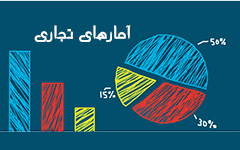
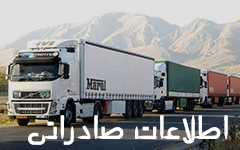

 - 2019 ©
- 2019 ©